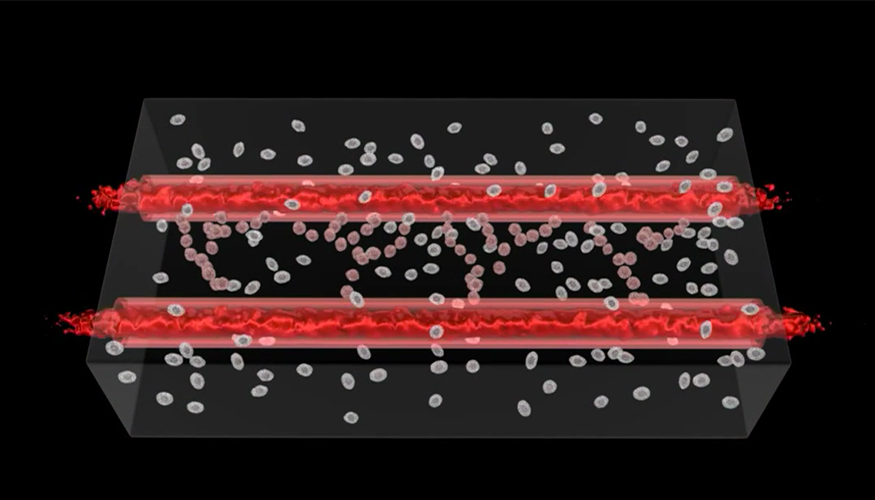The cardiovascular system is a complex web of tens of thousands of miles of arteries, capillaries and veins, branching throughout the body like tributaries of a great river. And now, researchers at Lawrence Livermore National Laboratory are recapitulating this intricate network using an emerging technology: 3D bioprinting.
“It’s going to change the way we do biology,” said Lab research engineer Monica Moya, the project’s principal investigator. “This technology can take biology from the traditional petri dish to a 3D physiologically relevant tissue patch with functional vasculature.”
Using a 3D printer and a “bio-ink” made of materials compatible with the human body, Moya and her team have successfully printed structures with living cells and biomaterials. The material and environment are engineered to enable small blood vessels, human capillaries, to develop on their own.
This process takes a while, so initially, tubes are printed out of cells and other biomaterials to deliver essential nutrients to the surrounding printed environment. Eventually, the self-assembled capillaries are able to connect with the bio-printed tubes and deliver nutrients to the cells on their own, enabling these structures to function like they do in the body.
Researchers say the precision and 3D structures made possible through bioprinting are enabling them to more effectively reproduce human physiology outside of the body, and will eventually lead to a better representation of each tissue system that makes up the human body.
Bioprinting complements a different Lab project aimed at replicating the body on a micro scale. That project, known as iCHIP (in vitro Chip-based Human Investigational Platform), re-creates and integrates the central and peripheral nervous systems, the blood-brain barrier and the heart.
